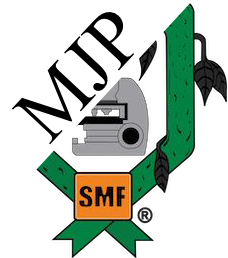-
Or Copy link


Article filters
Search Papers
The genus Bacillus as biological control agent against pests and pathogens for sustainable agriculture
By Fannie Isela Parra Cota, Isabeli Bruno, Mónica García Montelongo, Sebastián González Villarreal, María Fernanda Villarreal Delgado, Liliana Carolina Córdova Albores, Alina Escalante Beltrán, Sergio de los Santos Villalobos*
* Corresponding Author. Email: sergio.delossantos@itson.edu.mx / Institution: Instituto Tecnológico de Sonora
Received: 10/July/2024 – Published: 19/November/2024 – DOI: https://doi.org/10.18781/R.MEX.FIT.2024-34
-
Or Copy link
Abstract Background/Objective. Bacteria of the Bacillus genus have been studied since their discovery in 1872, for their ability to synthesize metabolites of interest such as proteins used to control phytopathogens. The objective of this research was to analyze the most outstanding species of the Bacillus genus, as well as the main compounds produced by these species, and the perspectives on the use of this bacterial genus for pest and disease control.
Materials and Methods. An exhaustive search was carried out in scientific articles and books to gather the most relevant information regarding the Bacillus genus, focusing on its role as a biological control agent for pests and pathogens.
Results. The Bacillus genus includes more than 427 taxa, which can be classified into different groups. Among the biological control agents (BCA) are the Bacillus cereus group, which includes B. cereus, B. anthracis, and B. thuringiensis, and the B. subtilis group, which includes B. subtilis, B. licheniformis, and B. pumilus, mainly. B. thuringiensis, through cry genes, has molecular mechanisms to synthesize a crystalline inclusion during sporulation, which contains proteins known as endotoxins or Cry proteins. B. subtilis produces substances with a high potential for biological control, such as volatile organic compounds, as well as bioactive secondary metabolites.
Conclusion. The potential of the Bacillus genus to be used as biological control agents is evident. They are widely used for the development of different biopesticides that have advantages over other products. However, it is necessary to continue conducting research from the in vitro area in the laboratory to the field, to help guarantee their biosecurity and effectiveness.
Keywords: Beneficial bacteria, sustainable agriculture, biocontrol, action modes.